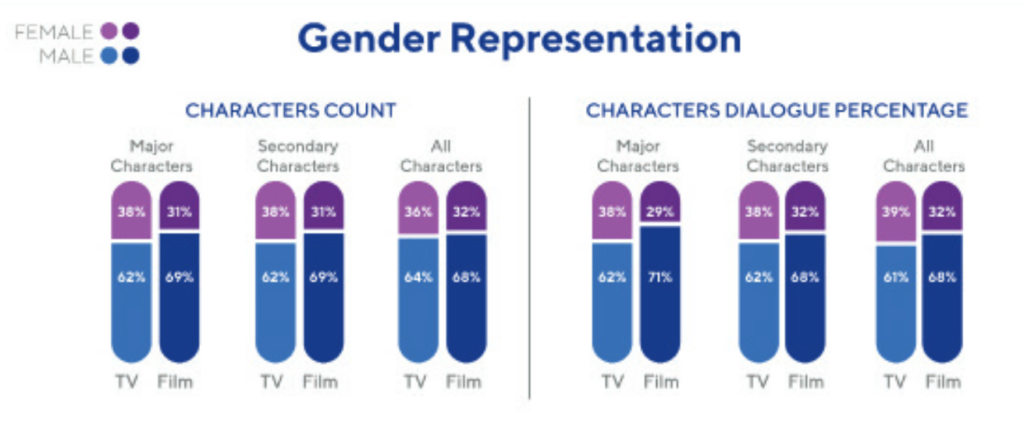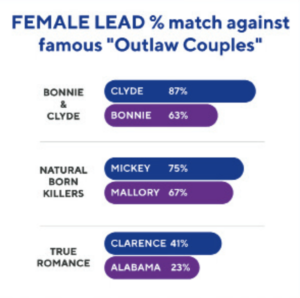Connections

M&E Journal: Using Technology to Improve Character Diversity
Story Highlights
Diversity and representation in film and TV is a huge topic in Hollywood today.
Whether it’s white actors voicing black animated characters, or cisgender actors playing transgender characters, we’ve seen an increased focus on getting casting right this past year.
But while advances are being made on-screen to tackle overall representation, progress behind the camera has been slower to occur.Writers, directors and development executives are still overwhelmingly white and male, meaning there still could be a disconnect between the authenticity of a project on paper, and the actors who are supposed to interpret the material for the audience.
The risk of this is characters may lack an authentic identity because they weren’t developed by someone who could identify with the character and their background.
 In these cases, diverse characters could end up “raceless,” or female characters may exist in name only, with all other characteristics exhibiting male traits. Audiences can sense this lack of authenticity in characters, and ultimately this lack of diversity behind the camera can impact the bottom line of a production.
In these cases, diverse characters could end up “raceless,” or female characters may exist in name only, with all other characteristics exhibiting male traits. Audiences can sense this lack of authenticity in characters, and ultimately this lack of diversity behind the camera can impact the bottom line of a production.
This could be due to viewers not connecting with characters, poor reviews, or, worse, social media and press calling out your characters as stereotypes.
While the industry continues to transform, there are technologies that have the ability to identify and measure these problematic areas of a script, comparing dialogue and plot elements to expected outcomes or example characters.
Artificial intelligence (AI) and natural language processing (NLP) technologies can be used to “read” the script and compare with a wide selection of authentic stories and characters to identify where additional work is needed.
This analysis up front by the studio could potentially prevent issues from cropping up later in the project.
StoryFit is one such technology that can rapidly provide this analysis, and below are a few concrete examples of tests that can be run on a screenplay in order to confirm the presence, credibility and authenticity of female characters.
GENDER BALANCE TESTS
A simple initial test of a script is to look at the balance across characters and their associated dialogue. By ex-amining a few key indicators producers can get a quick top-down view to identify areas of concern early. Those indicators include the percentage of female characters (primary and secondary), and percentage of screen time and/or dialogue for female characters (primary and secondary).
The outcome of this analysis could be to identify characters that need to be further developed or intro-duce new characters in order to balance the cast.
 BECHDEL TEST
BECHDEL TEST
This test is a measure of female representation in film and has three elements:
+ The film has at least two women in it
+ The two women talk to each other in at least one scene with all female characters
+ The two women talk to each other about some-thing other than a male character
Passing all three of these elements ensures that a script has female characters that exist for more than to advance a male character’s arc.Using StoryFit technology, applied to a real script,
we can see how this can easily be automated.
The following scene from Jumanji: Welcome to the Jungle passes the Bechdel test with this scene below:
INT. BETHANY’S BEDROOM – DAY CUT WIDE
to see that the iPhone is at the end of a selfie stick, and the whole operation is being carried out by the girl herself — BETHANY WALKER.
And there is in fact a lot of effort going into this: the curtain has been clamped into place for the light, the sheets are staged, and we get the sense that this is her 10th attempt at this photo. She scrutinizes it, to herself —
YOUNG BETHANY: Cute, right…?
Understatement. Probably the prettiest girl in school, in fact. She captions the photo — “Just rolled out of bed. Ugh mornings. #nofilter #lovemylife #youdoyou” — then posts it … and then immediately seems worried.
Her 11-year old sister Kylie enters —
KYLIE: Did you post a pic?
YOUNG BETHANY: Yeah.
KYLIE: How many likes does it have?
YOUNG BETHANY: What? I don’t know. Who cares?
She does, a lot. She glances at her phone, and sees that in the time it’s taken to have this conversation, she has —
YOUNG BETHANY (CONT’D): Like, 7 “likes” and … 3 comments. Whatever. Who cares.
ROLE REVERSAL TEST
Using AI-generated character insights, we can quickly provide a gut check around authentic female characters for development executives. For example, the “Female Lead” graphic featured here, of a lead female character of a new drama series that stars an outlaw couple, displays inconsistencies with the character and females in real life.
 KEY TAKEAWAYS:
KEY TAKEAWAYS:
1. Compared to other outlaw couples, her traits are more similar to the male lead than the female lead of comparable titles. Critics have stated that strong female characters who are simply role reversals of male characters (swapping out female traits for male traits) goes from one extreme to the other without addressing the problem of underdeveloped female characters.
2. The female protagonist is brief in her words. She has the greatest number of lines but fewer overall words than the major male characters. This could signify a screenwriter not knowing how to write female dialogue and using male characters to drive plot while giving females more concise, responsive lines.
All of the above analyses can be done by a production assistant reviewing the script line by line.
But leveraging AI technology means this can be rendered in a dashboard in minutes, rather than hours or days. That speed can then be translated into faster, more accurate development sessions with the screenwriter and other development executives.
This application of technology is not meant to be a replacement for creativity throughout the filmmaking process, but a decision-support tool for areas that will be scrutinized, regardless of intent.
AI won’t solve the diversity and representation issues within the industry, but it can raise awareness of problematic areas within a production, and make sure authentic stories are making their way to a target audience.
* By David Ingham, M&E Lead, Cognizant
=============================================
Click here to download the complete .PDF version of this article
Click here to download the entire Spring 2021 M&E Journal









